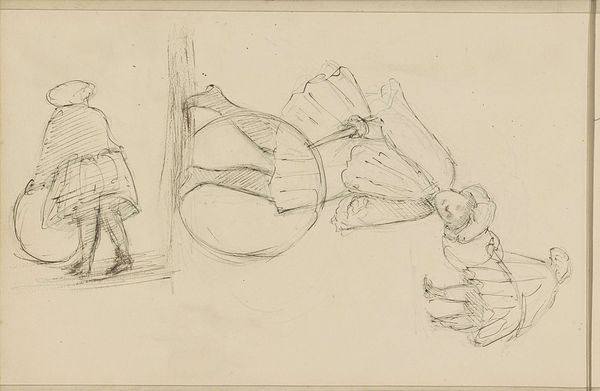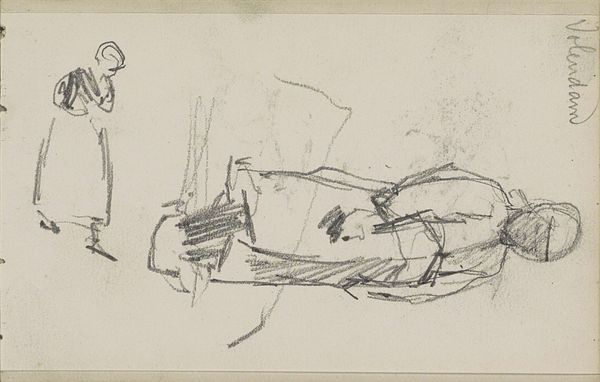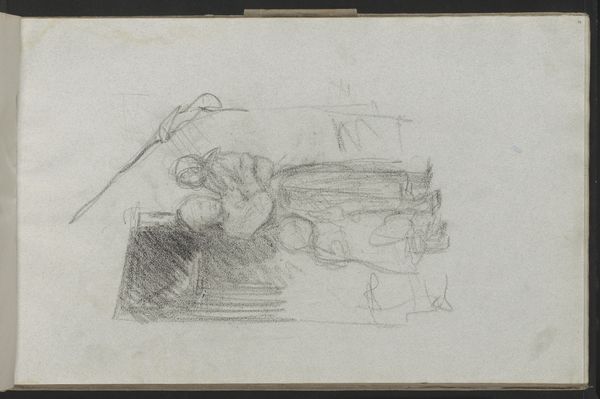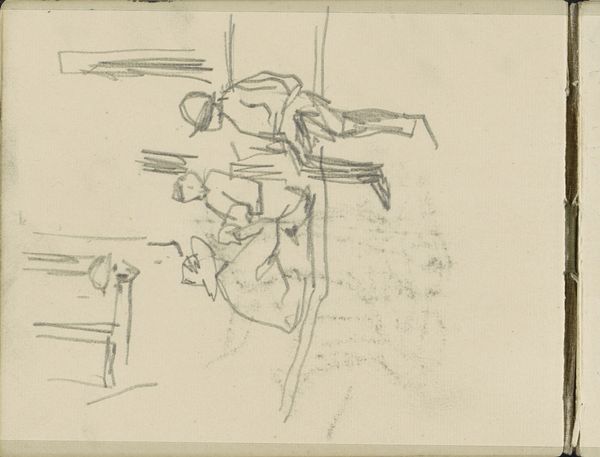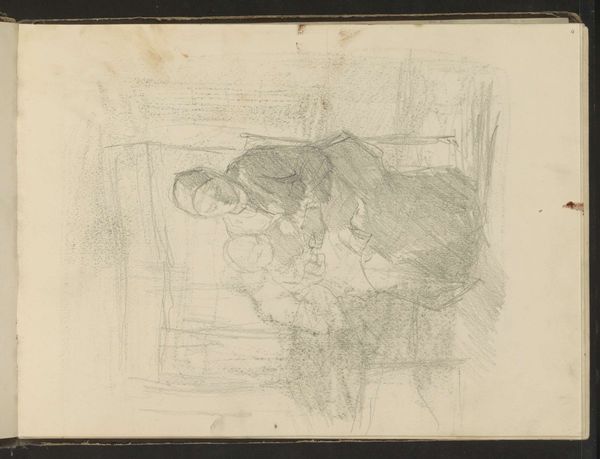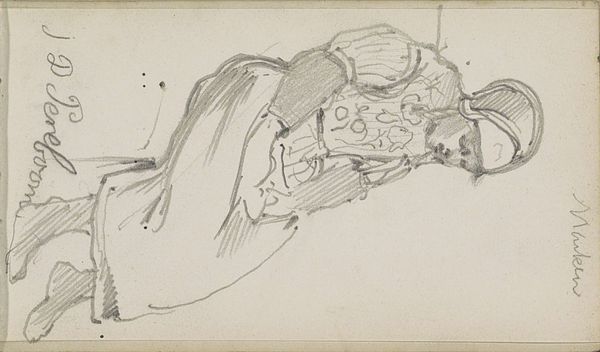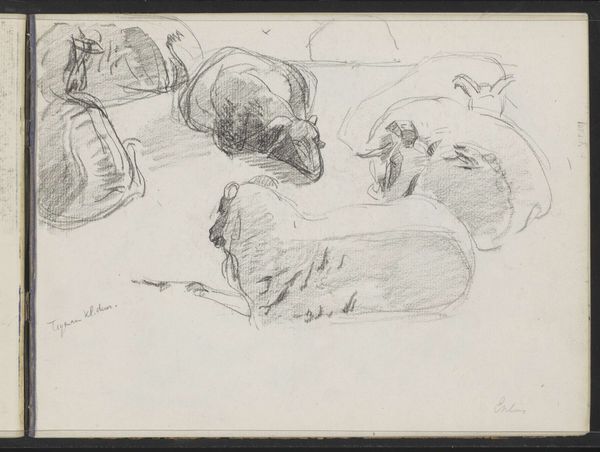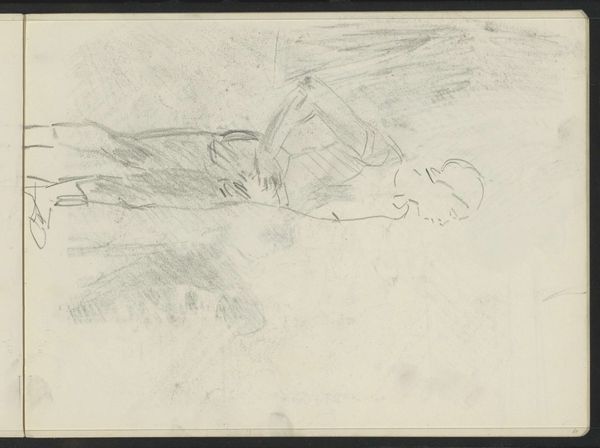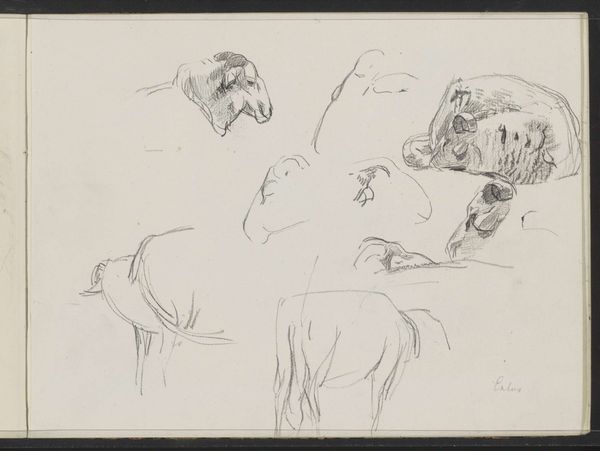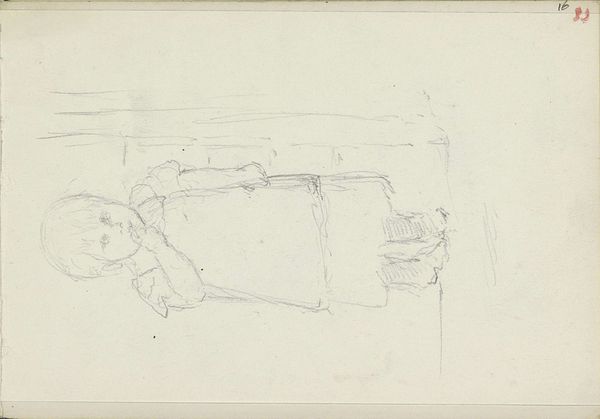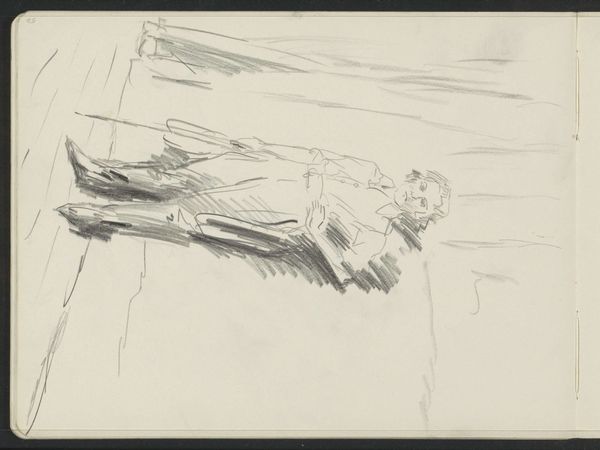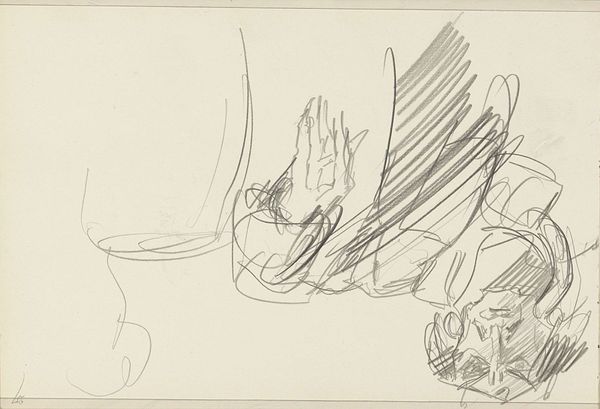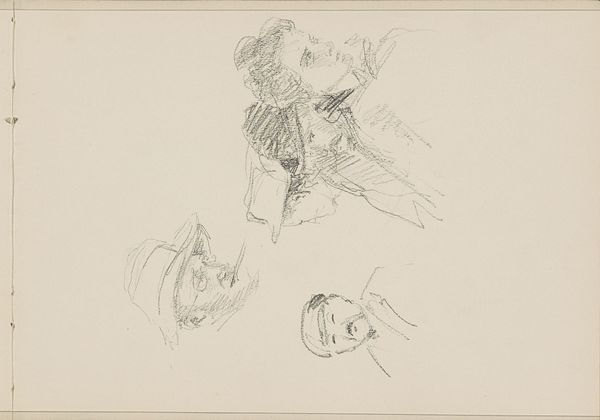
drawing, paper, pencil, graphite
#
drawing
#
landscape
#
paper
#
pencil
#
graphite
#
realism
Copyright: Rijks Museum: Open Domain
Editor: So, here we have Ferdinand Oldewelt’s “Schapen te Exloo,” a pencil and graphite drawing on paper, made sometime between 1904 and 1912. It has this fleeting, almost unfinished quality to it. I'm curious, what draws your attention in this seemingly simple sketch? Curator: I'm intrigued by Oldewelt’s choice of materials. Graphite and pencil are accessible tools, linked directly to labor and documentation. How does the sketch's 'unfinished' aesthetic, achieved through these humble materials, comment on the tradition of landscape art? Editor: That's a great point. I hadn't considered the implications of the medium itself. Are you suggesting the choice of pencil downplays the romanticism often associated with landscapes? Curator: Precisely. Think about the social context. This drawing emerged during a period of industrial expansion, possibly challenging the idealized rural landscapes so popular in painting. The rapid marks and sketchy lines hint at a world of quickening change, contrasting pastoral nostalgia. Do you notice any specific element pointing in that direction? Editor: Maybe the rapidly drawn, almost blurred quality of the sheep huddled together? There's a sense of transience. It makes me think of how livestock were becoming commodities. Curator: Exactly. It challenges this view of rural idyll. Even the paper itself – its texture, likely mass-produced – shifts our understanding. This piece asks us to consider the materiality and its place within broader economic and societal structures. What are your thoughts on the interplay between art and craft in Oldewelt’s approach? Editor: I think the apparent ease of the sketch is deceptive; it hides a deliberate commentary. I hadn't really thought about the materiality of art having meaning in this way, but I now see that the humbleness of the materials and how Oldewelt used them opens up a rich conversation around the work. Curator: It reframes how we look at this sketch!
Comments
No comments
Be the first to comment and join the conversation on the ultimate creative platform.
